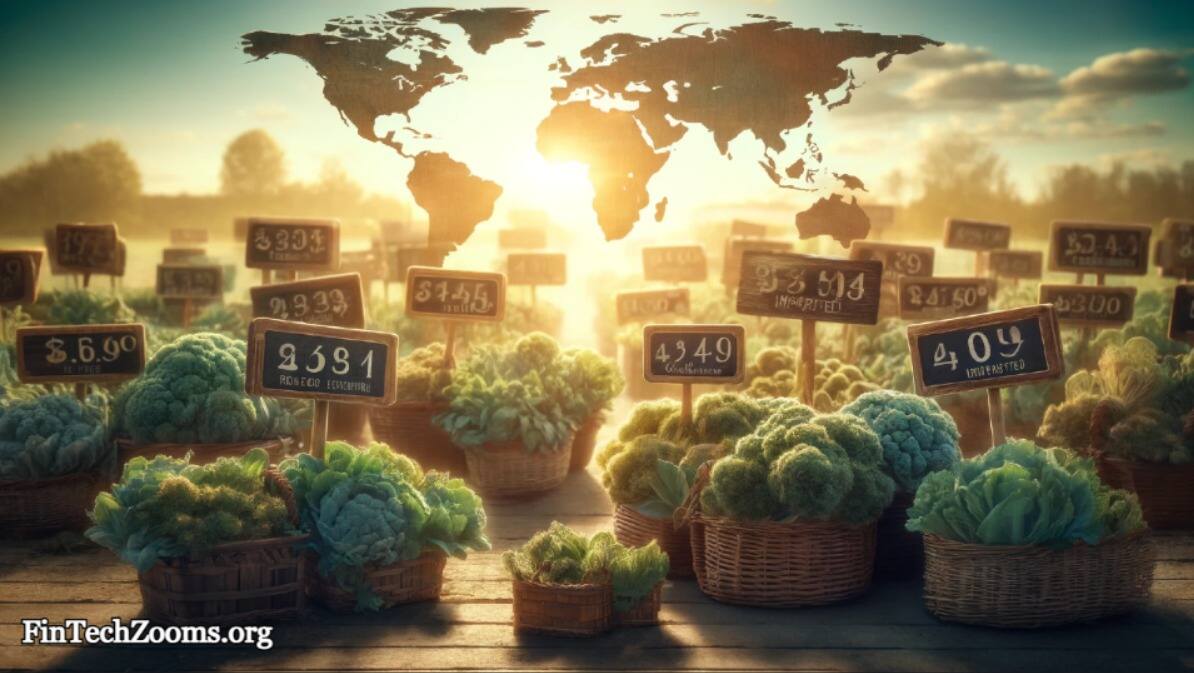Introduction
When it comes to buying a product, especially something as niche as Charalabush, many people are left with a lot of questions. What is it? How much does it cost? Why are prices different in different regions?
This article will answer all these questions and more, breaking down the price of Charalabush in a simple and easy-to-understand way. Whether you’re considering purchasing Charalabush or just curious about its pricing, this guide will provide valuable insights.
What is Charalabush?

Before diving into the price details, it’s important to clarify what Charalabush actually is. Charalabush refers to a type of plant or shrub that’s native to certain regions, often used in specific markets for various purposes, such as herbal medicine, landscaping, or even as a natural product in some culinary dishes. Depending on its use, the price of Charalabush can vary significantly.
Factors That Influence the Price of Charalabush
Just like with any product, the price of Charalabush is influenced by a variety of factors. These factors help explain why the cost of this plant can vary from place to place and even from time to time. Here are some of the most important elements to consider:
1. Rarity and Availability
One of the biggest factors affecting the price of Charalabush is its rarity. If the plant is scarce or hard to find, its price is likely to be higher. Certain types of Charalabush that grow in specific climates or remote areas may be more expensive because they are not widely available. On the other hand, if the plant is abundant and easy to harvest, its price will likely be lower.
2. Harvesting and Processing Costs
How Charalabush is harvested and processed can also influence its price. If it’s a plant that requires specialized care during harvesting or specific processing techniques, then the cost of labor and production will be higher. Organic Charalabush, for example, might cost more due to the absence of chemical fertilizers and pesticides, which adds to the overall cost of cultivation.
3. Demand in the Market
The demand for Charalabush plays a major role in determining its price. If more people are looking to buy Charalabush for its uses in herbal medicine or other industries, then the price will naturally go up due to the increased demand. Conversely, if the demand drops, prices may fall as well.
4. Location and Regional Variations
Geographical location also has a significant effect on the price. Charalabush prices can vary greatly depending on where it is being sold. For example, in areas where Charalabush is grown abundantly, you might find lower prices due to the local availability.
However, if you’re purchasing Charalabush in a place where it’s not easily accessible, the cost can be significantly higher due to transportation and importation costs.
5. Seasonal Fluctuations
Like many plants, the price of Charalabush can also fluctuate seasonally. During peak growing seasons, Charalabush may be less expensive due to the abundance of fresh stock. However, during off-seasons or periods when the plant is harder to find, the price may increase due to the limited supply.
Price Trends Over Time
The price of Charalabush, like many commodities, tends to experience ups and downs. Over the past few years, there has been a noticeable trend in increasing prices for certain types of Charalabush. This is largely due to increasing interest in herbal remedies and natural products, as well as a general rise in demand for plants used in wellness and beauty products.
For instance, in the last two years, some Charalabush varieties have seen a 10% to 15% increase in price. This could be attributed to the growing awareness of the plant’s benefits and an increase in consumer preference for organic, plant-based products.
Regional Price Differences: How Location Affects Cost
Charalabush pricing can also vary depending on where you are located. Let’s break down how regional differences can affect the cost of Charalabush.
1. In the Region of Origin
In areas where Charalabush is native or where it is cultivated in large quantities, the prices tend to be much lower. For example, in regions where it grows naturally or is farmed on a large scale, you may be able to find Charalabush at a significantly lower price due to the reduced transportation and harvesting costs.
2. Urban vs. Rural Areas
Even within a country, you might notice different prices based on urban vs. rural settings. Urban areas, especially in big cities, often have higher prices due to the added cost of distribution, retail markups, and demand from people living in more densely populated areas. Rural regions, on the other hand, may have better access to the plant and lower costs, especially if local farms produce Charalabush.
3. International Price Variations
If you’re buying Charalabush from an international market, prices can vary even more. Import duties, taxes, and shipping costs can all contribute to higher prices in countries where the plant is not naturally found or is imported from abroad. For example, in countries where Charalabush is not locally available, the cost can be substantially higher due to the need to import the product from its native regions.
Understanding Charalabush Prices with Examples
To give you a better sense of what you might pay for Charalabush in different scenarios, let’s consider a few examples.
- Local Purchase in a Region of Origin: If you’re buying Charalabush directly from a region where it is abundant, you might pay $5 to $10 per kilogram, depending on quality and local market conditions.
- Importing to a Different Country: If you live in a country where Charalabush isn’t grown locally, and you want to purchase it online or from a specialty store, you could be looking at prices anywhere from $20 to $50 per kilogram. This price range reflects not only the cost of the plant but also the added shipping, taxes, and import duties.
- Organic vs. Non-Organic Charalabush: If you’re looking for organic Charalabush, expect to pay a premium. Organic Charalabush can cost 30% to 50% more than non-organic varieties due to the careful cultivation methods required to ensure the plant is free from chemical pesticides and fertilizers.
How to Get the Best Price for Charalabush

If you want to buy Charalabush at the best price, here are some tips to help you make an informed purchase:
- Buy Directly from Local Producers: Purchasing Charalabush directly from a local farmer or producer can often save you money by cutting out the middleman. This is especially true if you’re in a region where the plant is abundant.
- Consider Bulk Purchases: If you use Charalabush regularly, buying in bulk can be a cost-effective option. Many retailers or wholesalers offer discounts for larger quantities, which can significantly reduce the per-unit price.
- Look for Sales and Discounts: Keep an eye out for seasonal sales or promotions. Many online stores or herbal shops offer discounts during certain times of the year, which can make a big difference in the price you pay.
- Compare Prices Online: If you are purchasing Charalabush from an online retailer, take the time to compare prices across different platforms. Different sellers may offer different prices based on shipping costs and availability, so it’s worth checking several options before making a purchase.
Conclusion
In summary, the price of Charalabush is not fixed. It depends on a variety of factors, including rarity, location, demand, and seasonal fluctuations. If you’re looking to purchase Charalabush, understanding these factors will help you make a more informed decision.
By considering your location, whether you’re buying locally or importing, and comparing prices from different sellers, you can find the best deal on Charalabush. Keep in mind that prices may also vary based on whether you’re purchasing organic or non-organic varieties, with organic Charalabush often costing more.
Finally, be aware that market trends can change, so staying up to date with supply and demand trends will give you a better sense of when to buy at the most competitive price.



